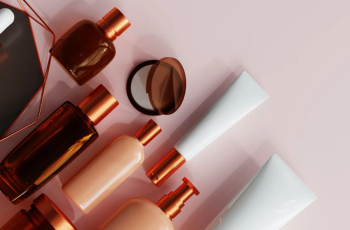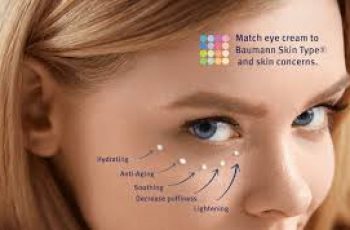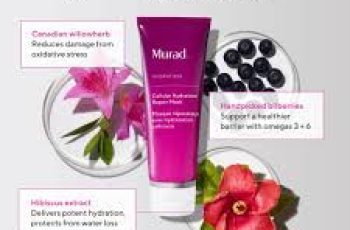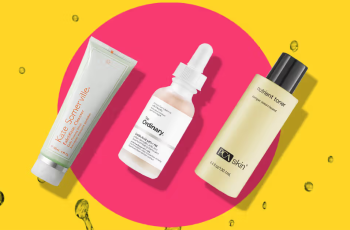
How Often Can You Use a Mandelic Acid Peel? A Complete Guide to Safe, Effective Exfoliation
Chemical peels are beloved in skincare for good reason—they improve texture, tone, and clarity, giving the skin a visibly refreshed and healthier appearance with consistent use.
One of the most effective yet gentle exfoliating options available today is mandelic acid, an AHA praised for its mildness, versatility, and impressive skin-renewing properties.
Whether you’re new to mandelic acid or already using it in your skincare regimen, a common question arises—how often is it safe to apply a mandelic acid peel for the best results?
This guide will help you understand different peel types, how mandelic acid works compared to other exfoliants, and how to safely incorporate it into your weekly or monthly skincare plan.
We’ll also cover how often you should apply it depending on your skin type, goals, and tolerance, along with tips for building a routine that supports healthy exfoliation long-term.
Understanding Chemical Peels: The Three Main Categories
Before discussing mandelic acid in depth, it’s important to understand the broader landscape of chemical peels, which are divided into three main types—superficial, medium, and deep.
Superficial peels are the most common, often containing alpha hydroxy acids (AHAs) like glycolic, lactic, and mandelic acid, and work only on the outermost layer of your skin.
These are gentle peels that exfoliate the top layer (epidermis), with little to no downtime, making them perfect for at-home use and for those with busy schedules or sensitive skin.
They deliver gradual improvement, meaning regular application is required over time to maintain results like smoother texture, reduced breakouts, and brighter, clearer skin.
Medium peels reach into the upper dermis and use stronger acids like trichloroacetic acid (TCA), which provide deeper resurfacing and are usually done in clinics or salons.
These peels can cause redness, flaking, and require a recovery period of several days, making them suitable for targeting pigmentation, acne scars, or more visible signs of aging.
Deep peels are the most intensive, requiring clinical supervision, and often use phenol or high concentrations of TCA, offering dramatic results but significant downtime.
Because of their strength and potential for irritation, deep peels are recommended no more than once every few years, and they’re not suitable for all skin tones or sensitivities.
Mandelic Acid: What Makes It Special in the World of AHAs?
Mandelic acid is an AHA derived from bitter almonds, with a larger molecular structure than glycolic or lactic acid, which allows for slower penetration and reduced risk of irritation.
This slower absorption makes it ideal for those with sensitive skin, rosacea, or darker skin tones that may react to harsher acids, while still delivering impressive exfoliation results.
Mandelic acid works by dissolving the bonds between dead skin cells, helping them shed naturally and encouraging new, healthy skin cells to surface for a smoother, clearer appearance.
It also has antibacterial properties, which makes it helpful in reducing acne, clogged pores, and breakouts—especially for those with oily or combination skin types.
Another key benefit is its ability to target hyperpigmentation, including melasma and post-inflammatory dark spots, gradually brightening uneven areas with regular use.
Thanks to its gentle nature, mandelic acid is known as a “summer-safe peel” because it carries a lower risk of sun sensitivity—though sunscreen is still essential after use.
How Often Can You Use a Mandelic Acid Peel?
For most people, a mandelic acid peel can be used every 1 to 2 weeks to maintain skin clarity, treat mild acne, and gradually fade discoloration without overwhelming the skin barrier.
This frequency offers a balance between effectiveness and safety, giving your skin time to recover and regenerate between treatments without experiencing dryness or irritation.
Common benefits of consistent use include smoother skin texture, refined pores, improved radiance, reduced acne breakouts, and a more even overall skin tone.
Those new to chemical exfoliants should start slowly, using the peel once every 2 weeks and adjusting based on how their skin reacts—less is more when it comes to acids.
If you notice peeling, dryness, or increased sensitivity, it’s a sign you may be using the peel too frequently, and spacing treatments further apart will give your skin time to heal.
For Sensitive or Reactive Skin: Use Every 2 to 3 Weeks
If you have easily irritated or reactive skin, start by using a mandelic acid peel no more than once every 2 to 3 weeks and always do a patch test before the first full-face application.
Look for formulas with lower acid concentrations (5–10%) and avoid using it with other active ingredients like retinol or vitamin C in the same routine to minimize irritation.
Always follow your peel with soothing ingredients like hyaluronic acid, panthenol, or ceramides to help calm and replenish your skin barrier after exfoliation.
Monitoring your skin’s reaction over time will help determine the ideal frequency—if you’re getting good results without side effects, you may eventually increase to every 2 weeks.
For Oily or Acne-Prone Skin: Weekly Peels May Be Suitable
If you have oily skin or are prone to clogged pores and breakouts, weekly use of a mandelic acid peel may be well tolerated and can help control oil production and acne flare-ups.
Using a peel regularly may also help fade post-acne dark spots more quickly, reduce shine, and prevent new blemishes from forming by keeping pores clear and exfoliated.
Even for oilier skin types, it’s important to avoid daily peels or overuse, as this can lead to a compromised skin barrier, flaking, inflammation, and long-term sensitivity.
Signs of over-exfoliation include redness, burning, dryness, and a tight feeling after cleansing—if you notice any of these, reduce frequency and switch to barrier-repair products.
Professional-Strength Peels: Every 4 to 6 Weeks
Stronger, professional-grade mandelic acid peels that contain 20% or more acid should only be performed by licensed skincare professionals and spaced 4 to 6 weeks apart.
These peels can cause moderate shedding or temporary redness and are designed to produce more dramatic results in texture, pigmentation, and overall skin tone.
Always follow professional treatments with aftercare products that focus on hydration, soothing, and barrier repair to prevent irritation or unwanted side effects.
Consult a dermatologist or esthetician to decide how frequently you should receive these peels based on your goals, skin condition, and current skincare regimen.
Can You Use Mandelic Acid Daily?
Yes, daily use of mandelic acid is possible, but only with low-strength formulas such as toners, serums, or cleansers containing 2–5% concentrations designed for everyday application.
These products gently exfoliate the skin without causing irritation and are great for maintaining glow and clarity between stronger peel treatments without overloading the skin.
However, using higher concentrations (10–20%) on a daily basis is not recommended, as this can lead to increased sensitivity, redness, or long-term disruption of the skin barrier.
If you do use mandelic acid daily, make sure to avoid layering it with other strong actives like benzoyl peroxide or retinoids unless directed by a skincare professional.
Always follow daily acids with a gentle moisturizer and high SPF protection to protect your skin from UV damage and maintain a healthy, balanced complexion.
Sample Weekly Skincare Routine Featuring Mandelic Acid
Evening Routine (Peel Day – Once a Week or Biweekly)
Cleanser: Use a gentle, non-stripping cleanser that removes dirt without disrupting the skin barrier.
Peel: Apply a mandelic acid peel to clean, dry skin according to instructions—leave on for 5–10 minutes depending on product strength.
Rinse or neutralize the peel (if required), and avoid using retinoids, vitamin C, or other acids for 24 hours after treatment.
Hydrating Serum: Apply a calming, water-based serum with hyaluronic acid or panthenol to help soothe and plump the skin.
Moisturizer: Finish with a nourishing, fragrance-free moisturizer to seal in hydration and support skin recovery overnight.
Morning Routine (Day After Peel)
Keep the morning routine simple and gentle—cleanse with lukewarm water and a non-foaming cleanser to avoid irritation.
Apply a lightweight serum or essence with calming ingredients like niacinamide, green tea, or aloe vera to reduce redness and inflammation.
Always wear a broad-spectrum sunscreen with SPF 50 to protect your skin from UV damage, even on cloudy or indoor days.
Avoid using heavy makeup or other exfoliants the day after a peel to let your skin breathe and fully recover.
Who Should Avoid Mandelic Acid Peels?
Avoid using mandelic acid peels on broken or damaged skin, cuts, open wounds, or during active skin infections like cold sores or bacterial breakouts.
Those with severe eczema, psoriasis, or during a rosacea flare-up should speak with a dermatologist before using any chemical peel products.
If you’re currently using prescription retinoids, topical acne medications, or undergoing professional treatments, space out active ingredients to prevent over-exfoliation.
Pregnant or breastfeeding individuals should consult a healthcare provider before introducing mandelic acid into their routine, especially in higher-strength formulations.
Final Thoughts: A Gentle Yet Powerful Skin Ally
Mandelic acid is one of the most well-rounded chemical exfoliants—gentle enough for frequent use but effective enough to target acne, dullness, hyperpigmentation, and signs of aging.
With the right frequency and supporting skincare, mandelic acid peels can transform your complexion gradually and safely, leaving you with smoother, brighter, and healthier skin.
Start slow, listen to your skin, and tailor your routine based on how it responds—everyone’s skin is different, and consistent, thoughtful care is the key to long-term success.
If in doubt, consult with a board-certified dermatologist or licensed esthetician to help determine the best frequency and formulation for your unique skin concerns.
Above all, remember that SPF is your best friend—especially when using acids—and skipping it can undo all the progress made by your thoughtful exfoliation routine.



